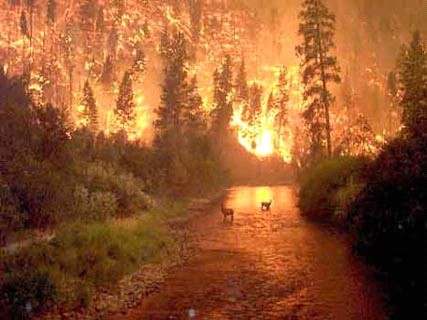In great forest fires, an enormous number of trees burn, and such fires lead to great amounts of CO2 being released. Despite this, we do not expect that forest fires increase the greenhouse effect.
Just as trees, fossil fuels are also natural substances. Explain why it is so that burning of these two natural substances, both with release of CO2, are different in a climate context.
|
 |
 |
 |
|
Forest fire on Bitterroot National Forest, Montana. Photo courtesy of John McCougan, Alaska Fire Service, 2000
|
|









